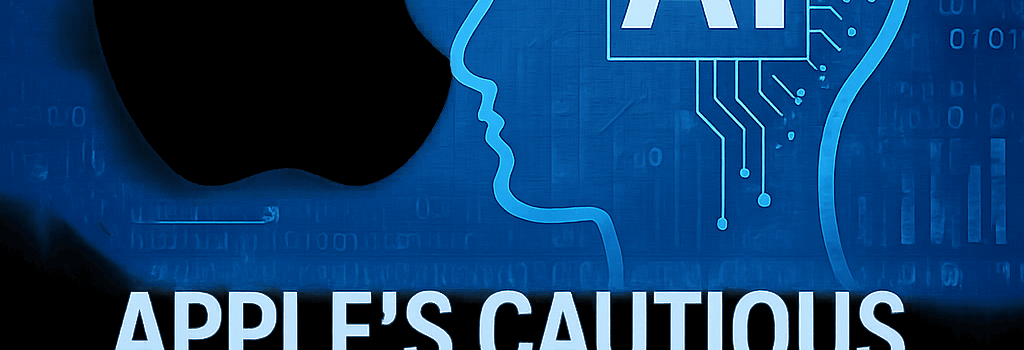Apple’s Cautious AI Advances Amid Competitive Surge

Introduction
At WWDC 2025, Apple unveiled a suite of modest Apple Intelligence enhancements—live call translation, visual search upgrades, and developer APIs—yet conspicuously avoided showcasing the long-promised “more personalized” Siri. As rivals like OpenAI, Google, and Meta push cutting-edge generative AI into consumer and enterprise products, Apple’s conservative rollout raises questions about its ability to compete in a space defined by rapid innovation.
Incremental AI Updates at WWDC 2025
Rather than unveiling a sweeping AI breakthrough, Apple focused on practical, incremental features baked into iOS 26, macOS Sequoia, and visionOS 2:
- Call Screening: Automatically answers unknown callers using on-device speech recognition and transcribes intent in real time. Leveraging the A17 Pro Neural Engine (16 cores, ~17 TOPS), it achieves sub-second transcription latency with differential privacy safeguards.
- Visual Search 2.0: Enhances product discovery via end-to-end image embeddings (512-dim vectors), matching against a local cache and cloud index. Apple reports a 20% accuracy gain in similarity search compared to last year’s implementation.
- Live Translation: Adds support for 12 new language pairs (including Hindi–English, Arabic–Chinese) with 60 ms average response times, using a hybrid on-device/cloud model that dynamically offloads heavy inference to Apple’s AWS-powered cloud.
On-Device AI: Hardware and Performance Considerations
Apple’s insistence on on-device intelligence leverages its custom silicon roadmap. The A17 Pro SoC, fabricated on TSMC’s 3 nm process, integrates:
- 16-core Neural Engine (~17 TOPS)
- 8 GB LPDDR5-class unified memory (up from 6 GB in A16)
- 540 GB/s memory bandwidth
- Enhanced Secure Enclave for encrypted model storage
Rumors suggest the forthcoming A18X chip in Vision Pro 2 will push 25 TOPS and leverage a 12 B-parameter LLM optimized with quantization (int4) and pruning techniques to deliver sub-100 ms response times. However, on-device model sizes remain limited compared to cloud-hosted GPT-4 (175 B parameters) or Google’s PaLM 2 (540 B), affecting both context window and generation quality.
Privacy and Security in AI: Apple’s Differential Privacy Approach
Apple continues to champion privacy by default. All on-device AI processing uses:
- Encrypted Local Models: Models are sandboxed within the Secure Enclave and cannot exfiltrate raw data.
- Differential Privacy: Aggregate usage metrics are noise-injected (ε=1.2) before telemetry submission, limiting individual re-identification risks.
- On-Device Learning: Federated learning experiments allow model fine-tuning across devices without centralizing user data.
While these safeguards distinguish Apple from Google and Microsoft, they also constrain rapid model iteration and cross-device feature rollout.
Developer Ecosystem and Third-Party AI Integrations
Apple opened its on-device LLM APIs to all developers, allowing apps to:
- Call
LLM.generate()for natural language tasks—summarization, content creation, Q&A—using the built-in 8 B-parameter model or larger cloud-hosted variants viaLLM.remote(). - Integrate OpenAI’s code completion engine directly in Xcode, offering inline suggestions via GitHub Copilot APIs and Cursor’s contextual snippet recommendations.
- Embed ChatGPT image generation in Image Playground, with explicit user consent and return-path encryption.
Craig Federighi emphasized, “We’re democratizing AI for developers while still putting privacy first.” Early feedback from startups indicates that Apple’s on-device inference can reduce server costs by 40%, albeit at the expense of lower model fidelity compared to cloud services.
Comparison with Rival AI Assistants
Competitors have taken more aggressive stances:
- OpenAI’s GPT-4 Turbo: 128 K token context window, 175 B parameters, cloud-only inference with 50 ms cold-start latencies.
- Google Gemini: 1 T parameter family, multimodal by default, integrated into Workspace and Search.
- Meta Llama 3: Open weights (8–70 B), optimized for 4 bit quantization, supported on ARM edge devices via PyTorch and Rust runtimes.
Benchmarks (Hugging Face Open LLM Leaderboard) show Apple’s on-device model trailing GPT-4 on standard NLP tasks by 10–15% in Micro F1 score yet outperforming in latency and privacy metrics.
Expert Perspectives and Future Outlook
“Apple’s retreat from headline AI may frustrate investors, but it preserves stability and user trust,” says Dr. Lina Chen, AI ethics researcher at Stanford University. “The real question is whether their approach can catch up once models become too large for smartphones alone.”
Investing.com senior analyst Thomas Monteiro noted, “With share performance dipping 1.2% post-WWDC, the clock is ticking faster for Apple. They must deliver a demonstrable Siri upgrade or risk ceding mindshare.” Meanwhile, internal reports suggest a renewed push for “Project Mercury” — an advanced AI assistant slated for 2026 that may combine on-device inference with private cloud offloading.
Ultimately, Apple’s balance of privacy, performance, and practicality could pay dividends if they time their AI milestone launches with new silicon generations. For now, though, Apple Intelligence remains a clever branding effort more than a transformative suite of AI experiences.